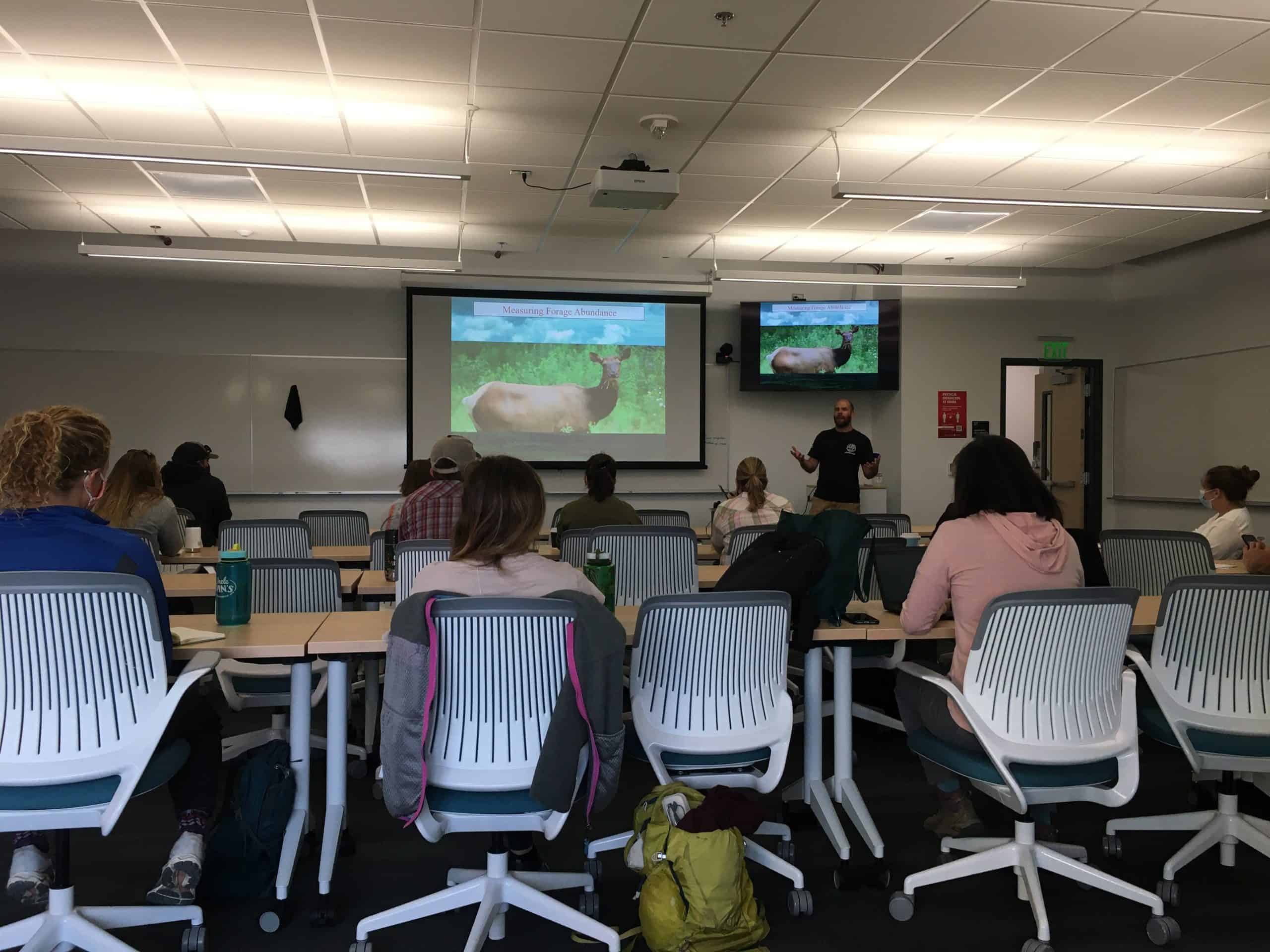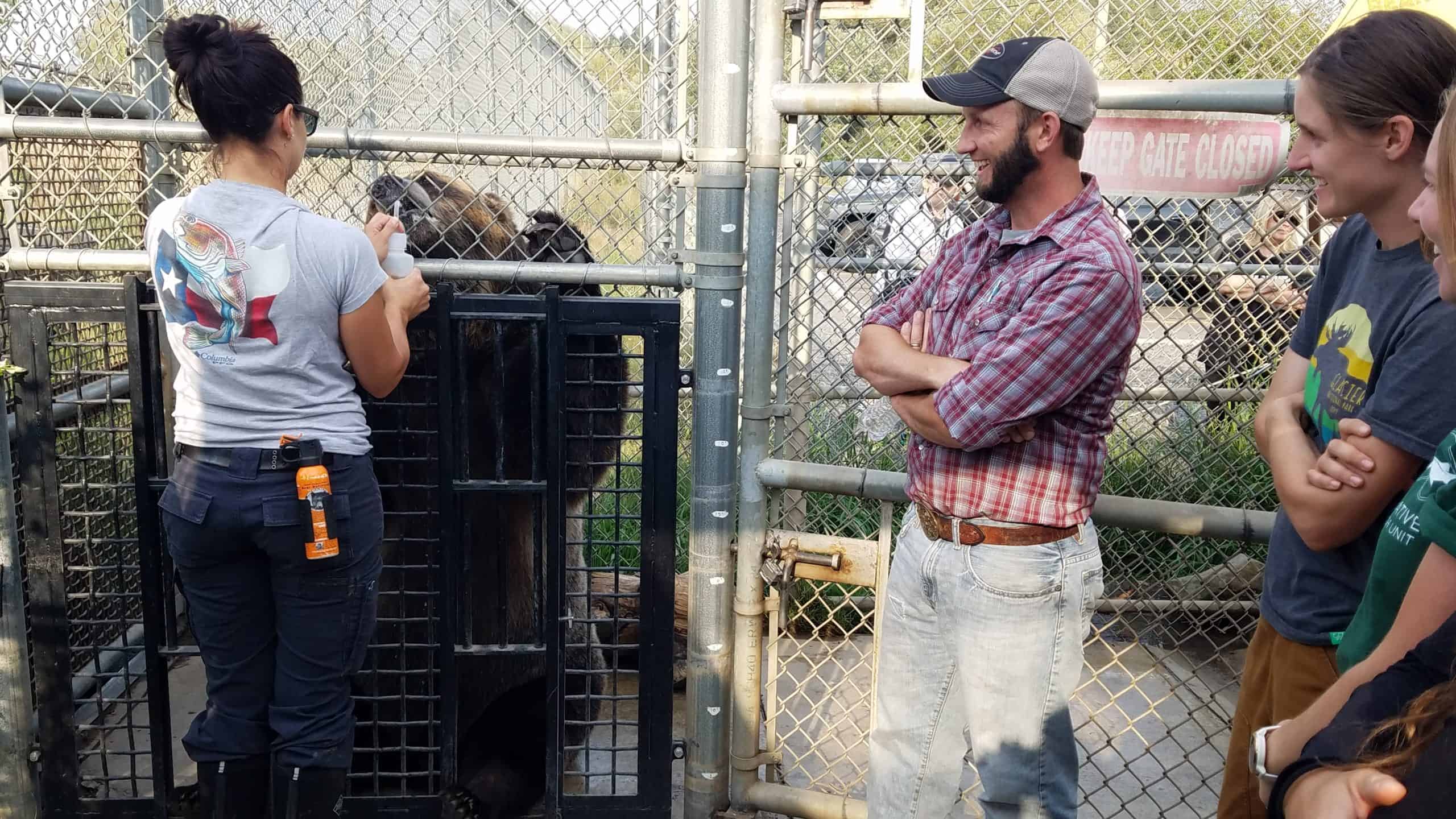Share this article
Nutritional ecology workshop polishes unique skills
While a lot of wildlife research often requires vegetation surveys or other nutrition-related information, many wildlifers don’t have the background or experience to know how to collect, analyze and interpret this type of data.
That’s why The Wildlife Society’s Nutritional Ecology Working Group decided to run a workshop in 2021 to provide important information to researchers about measuring forage quantity and quality for herbivores. One of the main goals of the working group is to develop and maintain professional standards for wildlife research and management and the application of methods for research related to nutritional ecology of wildlife. The workshop was the first step in meeting this goal. It was designed to help students and biologists understand vegetation sampling methods and how to collect and analyze samples accurately and consistently for studies of nutritional ecology to ensure their research is top quality.
Not only was this the first time a TWS organization unit has put on a workshop on the topic, but the Nutritional Ecology Working Group itself is pretty new. The group formed about three years ago with its first-ever meeting occurring at the annual TWS conference in Reno, Nevada. The meeting drew about 50 attendees, who created a mission statement to guide the working group.
“One of the things brought up by a graduate student was they get tasked by their professors with doing something nutrition related, often vegetation surveys, and don’t know the first thing about how to design a vegetation study, how to collect and preserve the samples, what laboratory analyses are most appropriate, and how to interpret the results,” said Rachel Cook, a senior research scientist at the National Council for Air and Stream Improvement and board member of the working group.
A workshop seemed like a good start to tackle this. The only trouble was that the COVID-19 pandemic had just started. Luckily, the working group was able to gain enough interest between when registration opened in May until when the workshop occurred in August. And even with travel restrictions and other challenges, 16 people attended the workshop in Washington state. Attendees included graduate students, agency biologists and habitat specialists, mostly from the northwestern U.S.
Elk biologist Jeremy Banfield traveled from Pennsylvania. “I am taking what I learned from that and applying it to elk management in Pennsylvania,” he said.
The 2 ½-day workshop, which provided continuing education credits that help maintain Certified Wildlife Biologist® credentials, consisted of lectures in the morning followed by a hands-on component in the afternoons. The main instructors (most of whom are also organizers of the workshop) are established experts in the field of nutritional ecology for herbivores: Rachel Cook, Lisa Shipley, David Hewitt, Ryan Long, Meghan Camp, Don Spalinger and Clare McArthur. “I think our lectures were a vital component of the workshop,” Cook said. “We started at the basics, like what’s the difference in digestive systems in different herbivores and how does that influence how they process forage, moved through methodologies and sampling design, and ended with lectures on scale and foodscapes, and interpretation of results relative to animal requirements. We also presented case studies showing how these techniques have been used to answer a research or management question and we had a problem-solving session with 10 real examples showing issues in laboratory results.”

Lectures on nutritional ecology occurred in the mornings of the workshop. Credit: TWS’ Nutritional Ecology Working Group
The lab and field work component was the most well-received by attendees. “For me, the field exercises were the most helpful component of the workshop,” said Katey Huggler, a PhD student at the University of Idaho. Huggler is working on a project identifying the links between nutrition, behavior and population performance of bighorn sheep (Ovis canadensis) in Idaho, Washington and Wyoming. She particularly enjoyed practicing field methods like estimating cover, collecting biomass and exploring lab procedures. “Practicing field methods was helpful for me to think about how I could apply it to my own field work or how I could adjust my protocol to be more effective.”
Although many researchers simply send their samples to a lab and don’t do the lab research themselves, attendees even got the opportunity to see what goes on in the lab when it comes to things like sequential fiber analysis. When exploring laboratory results for possible issues, understanding the mechanics of the lab assays are critical to that process. “It’s good to have an overview of what’s going on, but I’m not going to be in the lab doing the analysis,” Banfield said.
Attendees also enjoyed field trips, including to mule deer (Odocoileus hemionus), white-tailed deer (Odocoileus virginianus), black-tailed deer (Odocoileus hemionus) and grizzly bear (Ursus arctos horribilis) pens at Washington State University, where they learned from Lisa Shipley and Charlie Robbins about nutrition work being done on those animals.

Attendees took a field trip to a grizzly bear pen to learn about nutritional work on the animals. Credit: TWS’ Nutritional Ecology Working Group
Cook said she hopes the workshop gives attendees a better foundational knowledge about methods for sampling vegetation when they’re developing a study design. She also hopes when lab results come back, researchers won’t just accept them but think critically about the data they receive and make sure it makes sense.
Some attendees are already applying the skills they’ve learned. Banfield said he’s using what he learned on an upcoming research project. Huggler is as well. “The timing of the workshop was perfect for me to take things I had learned and apply them to my own field work,” she said. “I learned how to properly care for samples that are collected for nutritional quality, and methods to estimate plant biomass based on the double-sampling protocol—both of which were necessary for my PhD research.”
Banfield said nutritional ecology is understudied, but a useful field. “It’s a fledgling, growing field, and people in our science should be encouraged to learn more about it,” he said.
Wildlifers will get another chance to attend this skills workshop in Texas, Nov. 15-17. “If you are even considering taking the workshop, but you aren’t sure if you should, take it,” Huggler said. “You won’t be sorry.”








